The Covid Diaries 95 – ICA: War Inna Babylon
A review of War Inna Babylon: The Community’s Struggle For Truths And Rights, an exhibition on now at the Institute of Contemporary Arts (ICA). Hugely important and compelling, this is a must-see.
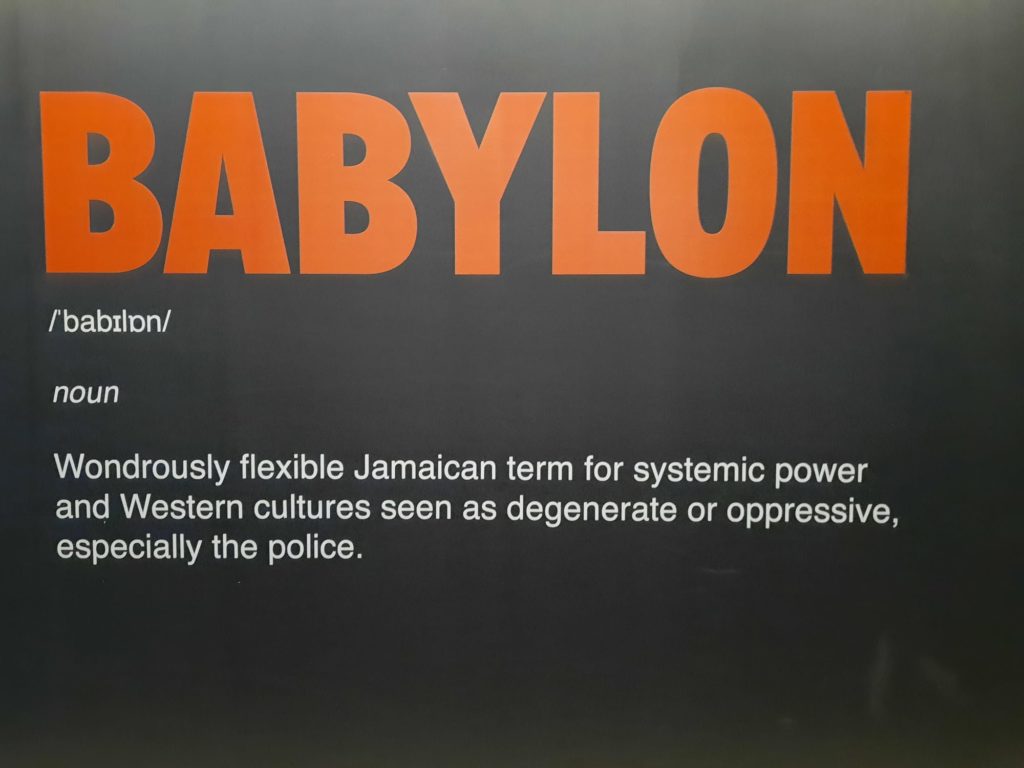
What Is This Exhibition About, Then?
War Inna Babylon: The Community’s Struggle For Truth And Rights is the current exhibition at the ICA. It is curated by community organisation, Tottenham Rights, and independent curators Kamara Scott and Rianna Jade Parker. To understand the exhibition, there are a few concepts that visitors must be familiar/familiarise themselves with:
- Babylon: as above, this is a “wondrously flexible Jamaican term for systemic power and Western cultures seen as degenerate and oppressive, especially the police.”
- Symbolic locations: a term coined by Sir Kenneth Newman as head of the Metropolitan Police in the 1980s. A symbolic location was an apparent ‘no-go’ area for police, due to high unemployment, crime rate, drug dealing and illegal activities.
- “Constitutionally disorderly”: again Sir Kenneth Newman, this time asserting the view that “in the Jamaicans you have people who are constitutionally disorderly, disposed to be anti-authority.”
What this exhibition asks us to think through is whether Sir Kenneth Newman is correct and there is an unavoidable and constant conflict between Caribbean/Jamaican people and police and other authorities, or whether, on the other hand, the unrest which has manifested itself multiple times over the decades is a justified reaction to the criminalisation of black culture and lack of access to equal education, housing and employment rights. To achieve this, Scott, Parker and Tottenham Rights have created a well-researched and presented documentary and archival exhibition, setting out background information before focusing on the symbolic location of Tottenham as a rich case study.
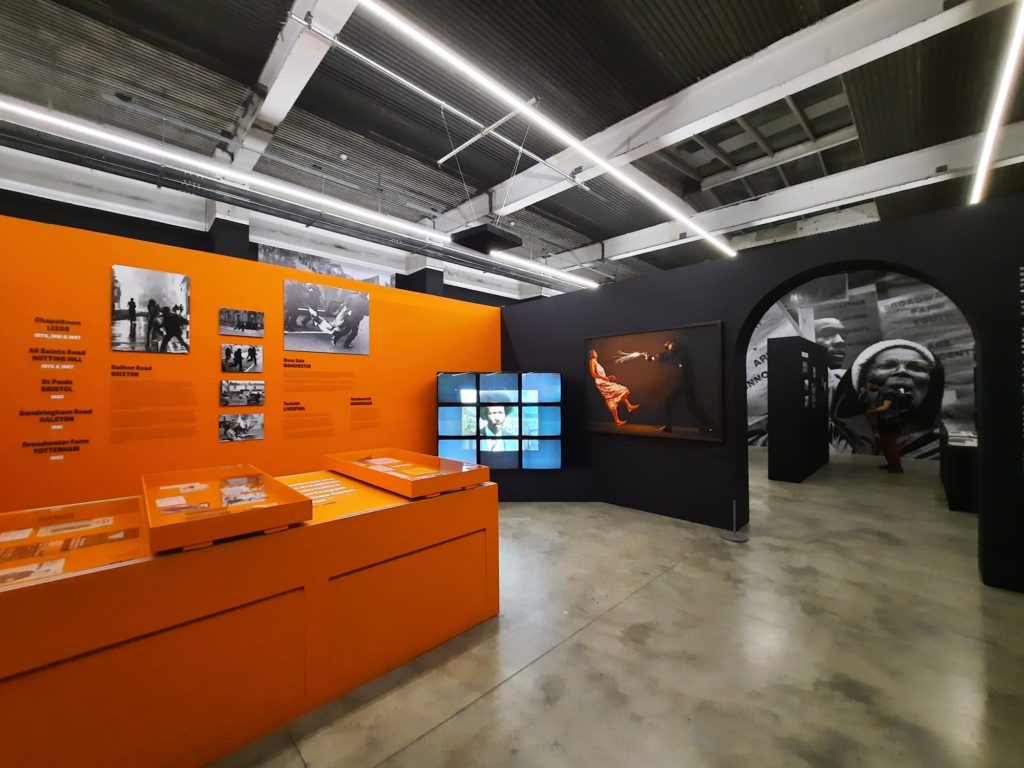
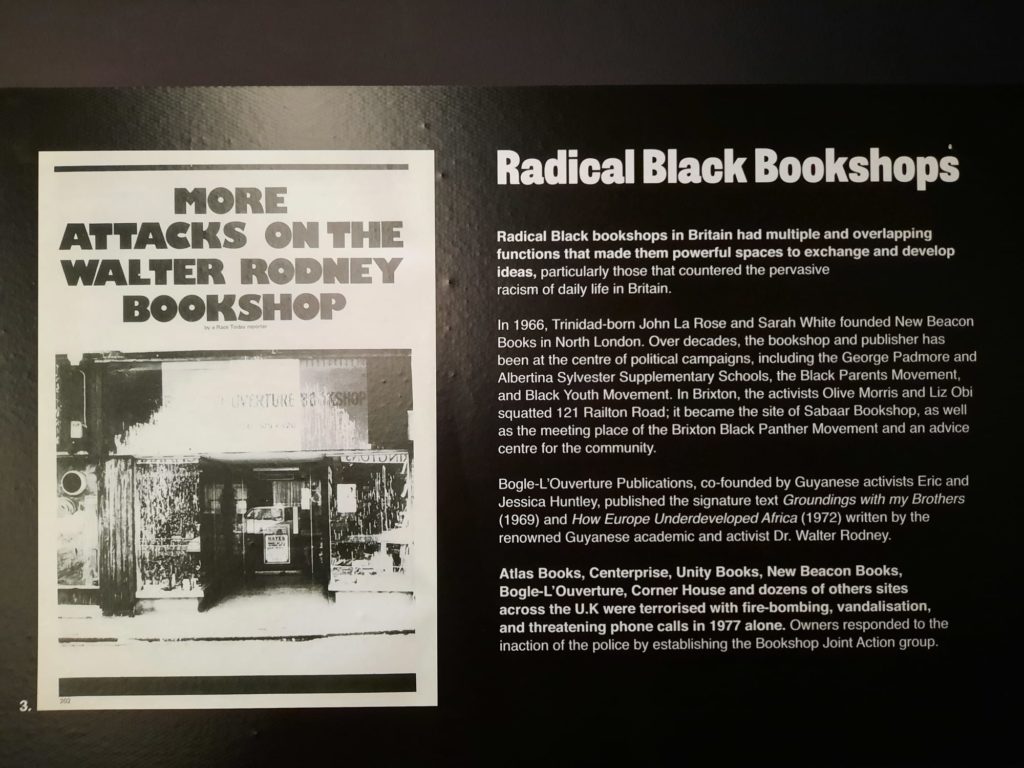
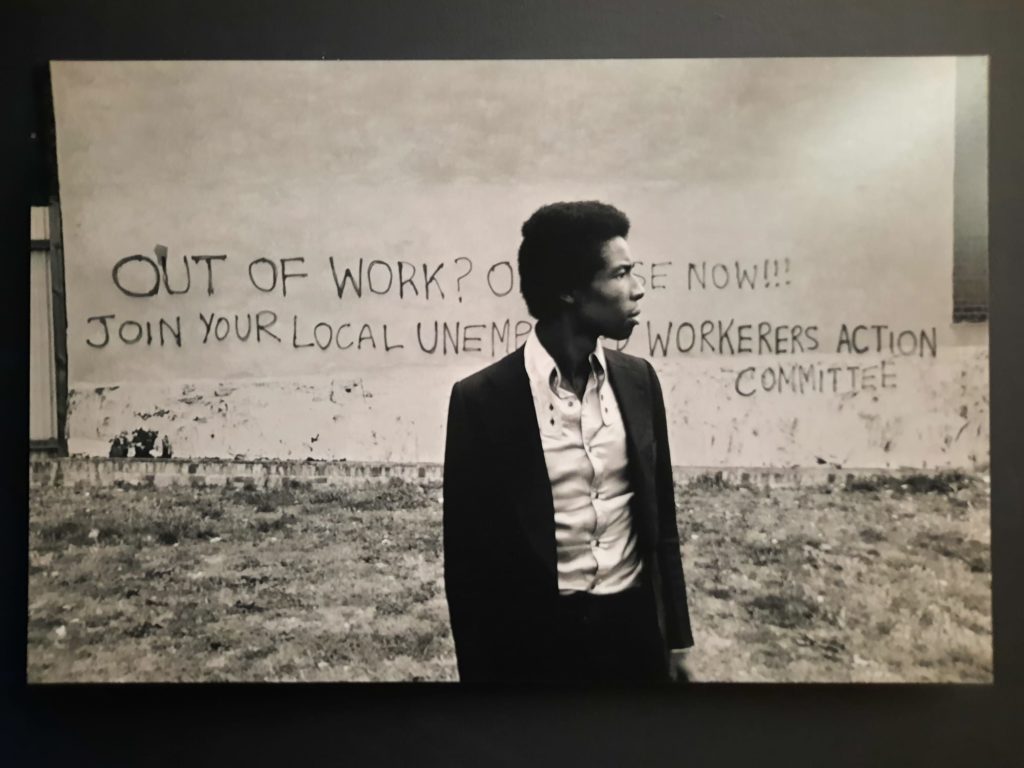
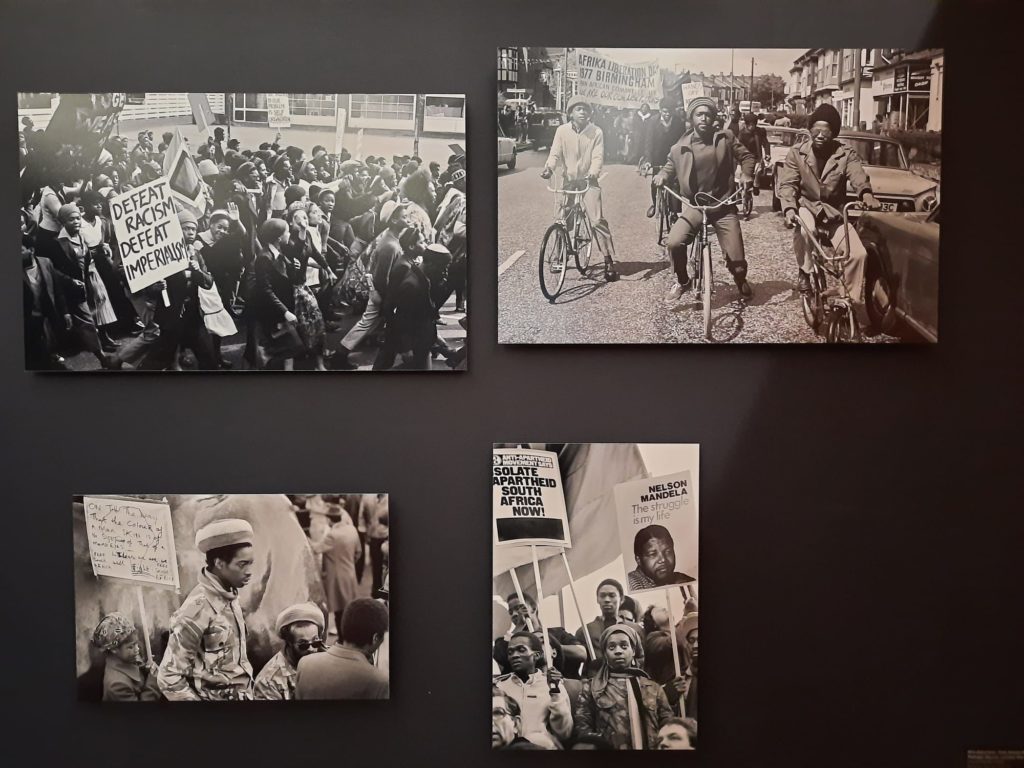

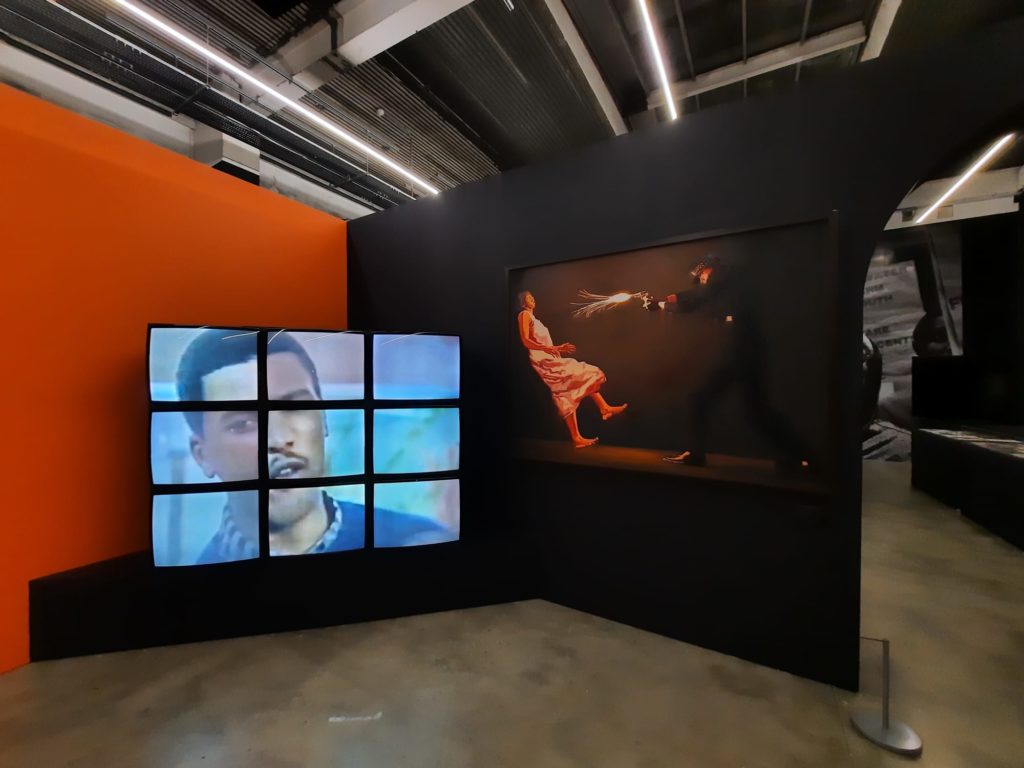
War Inna Babylon
There are two things the curators do well in this exhibition. They present a lot of information in a way that is clear and easy to follow; and find interesting artworks, images and films to break up the text.
In terms of the former, when I say a lot of information I mean A LOT. You could spend hours here (luckily the ICA is open until 9pm). The exhibition frames the background of the Windrush generation arriving in the UK as British citizens and facing prejudice; explains how they and their families were systematically excluded from equal access to housing, education, employment, finances and so on; goes into detail on several examples where overtly racist attacks or deaths in custody have led to high-profile unrest; offers long-format documentary films for further exploration; and presents a forensic analysis of the circumstances surrounding the death of Mark Duggan in 2011.
You need to come at this exhibition with a curious mind. Take your time walking through it, reading the text panels and absorbing the information. That is where the second point above really helps. As you can see in the images, there are plenty of archival images and recordings. There are also contemporary artworks by Kimathi Donkor and others. These artworks are not necessarily less confronting than the texts, but make the exhibition far easier to navigate without fatigue than it would be otherwise.
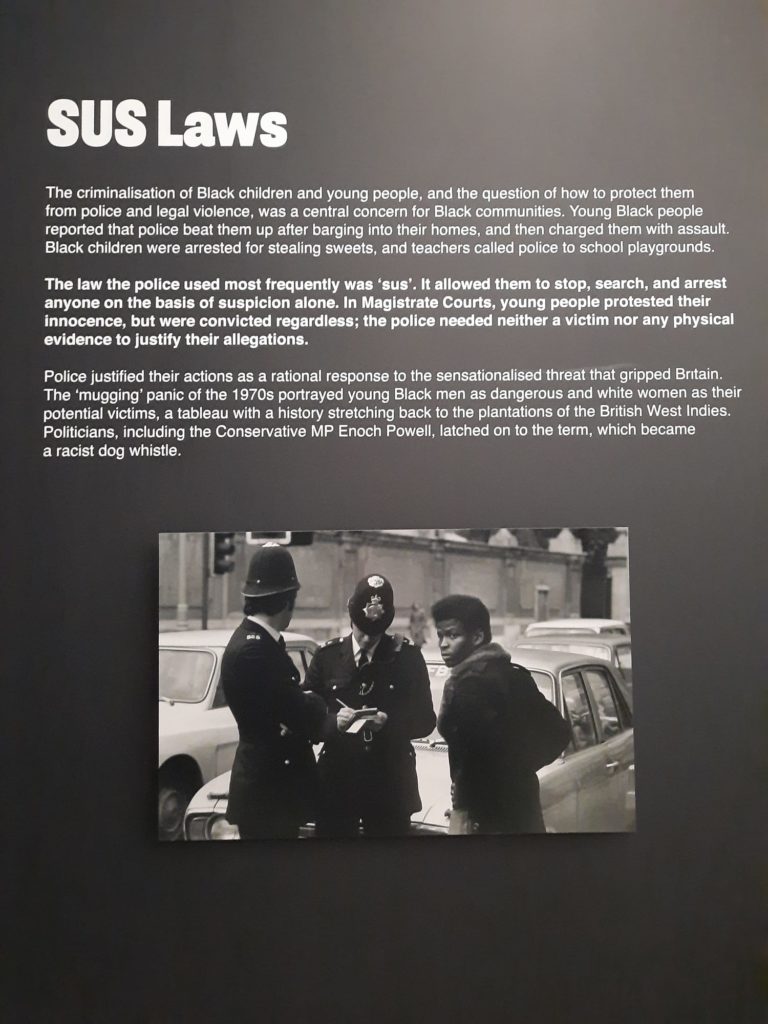
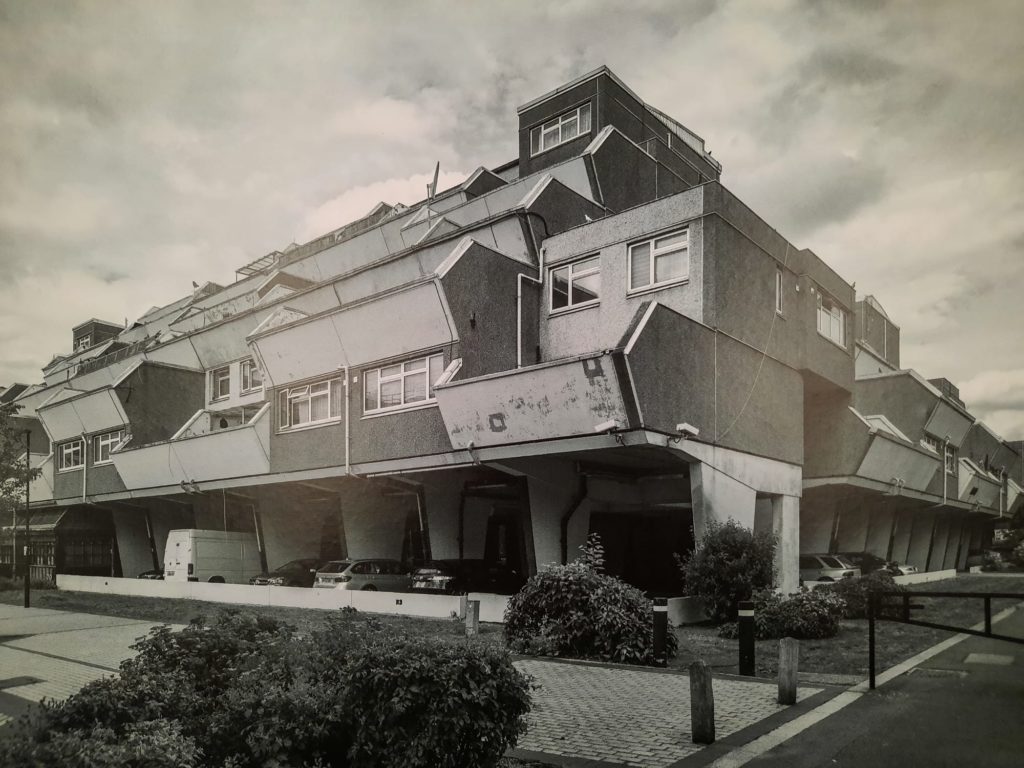

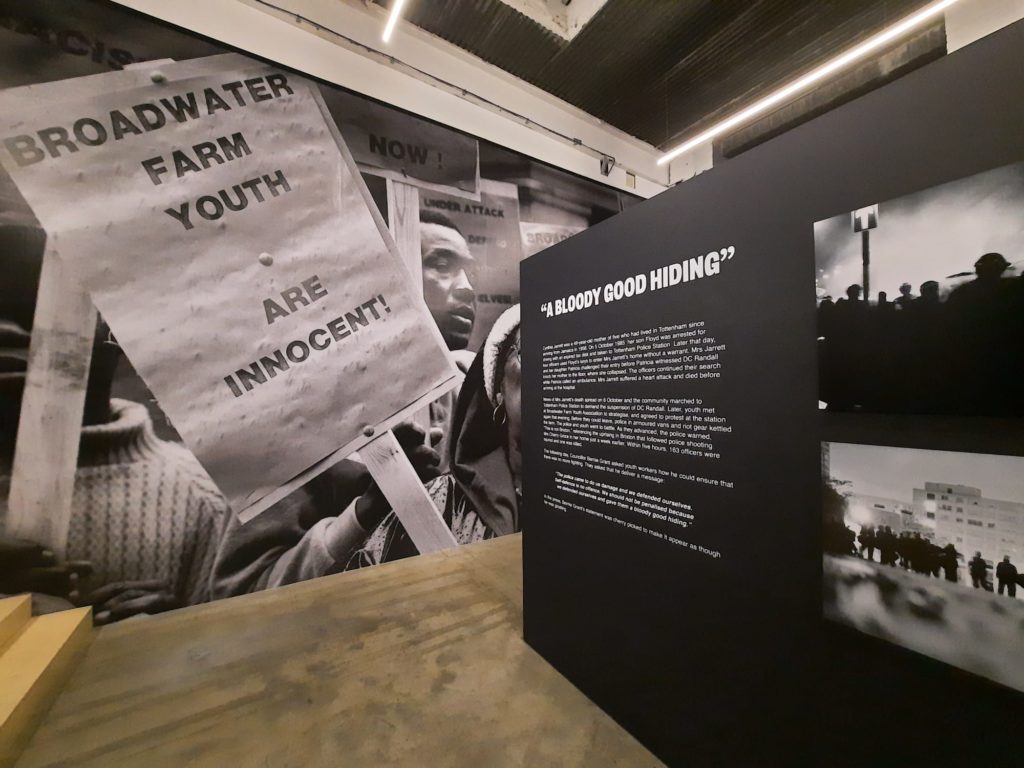
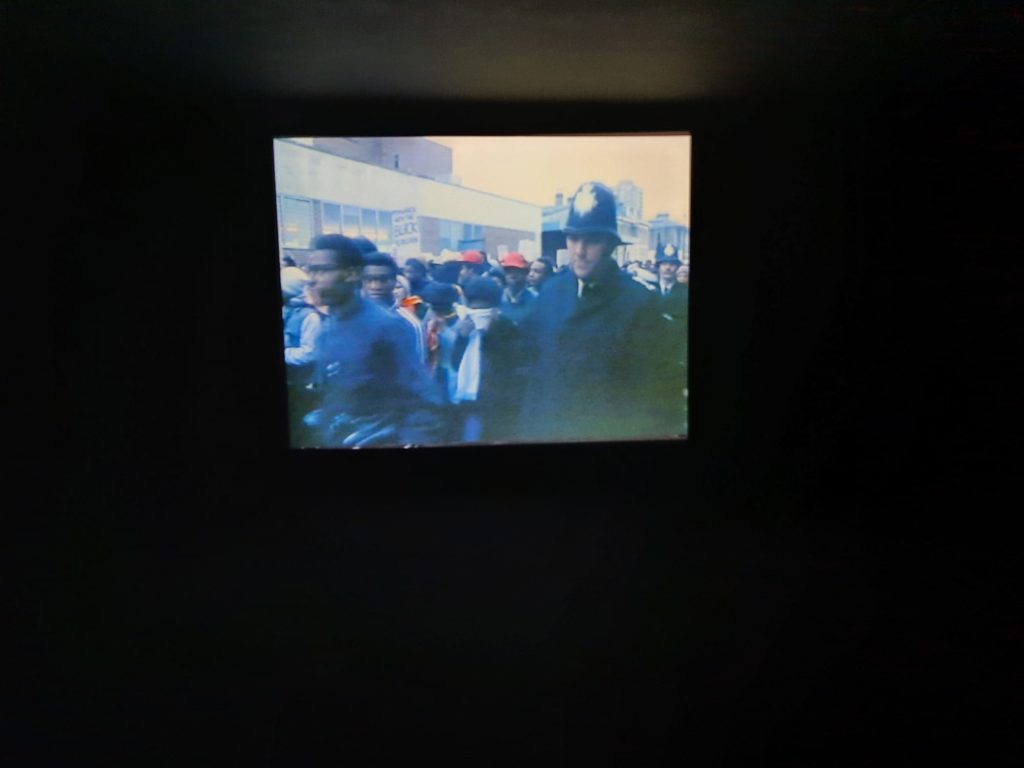

Educational And Urgent
This exhibition should have opened in May 2020. With all of the events last year including the Sewell Report, the death of George Floyd in the US and the Black Lives Matter protests which rippled outwards as a result, its timing feels even more important now. As a non-UK native I appreciated the opportunity to learn more about episodes I have only briefly heard of, like Broadwater Farm or the New Cross Fire in 1981; and important background information like the ‘sus’ law which had the effect of deepening mistrust of the police and community divisions. As a direct result of this exhibition, I feel more empowered to understand this country I live in and speak intelligently about what is a very complex history. It’s not every day that an exhibition has the power to potentially change your world view.
Also impressive in its educational potential is the work by Forensic Architecture presented in an upstairs room of the ICA. Forensic Architecture, who use “an array of innovative technological, aesthetic, and legal strategies” to investigate state and corporate crimes, have here looked at the events surrounding the 2011 death of Mark Duggan. Again there is an almost overwhelming amount of detail to take in. This includes fine-tooth-comb analysis of police officers’ statements; and a CGI recreation of theories surrounding whether Duggan was armed at the time of his shooting.
I remember the unrest that resulted from Duggan’s death, and feeling there was something I did not understand. I am pleased to now have a much better grasp (albeit belated) of what happened. An emotional counterpoint to this forensic approach comes in the form of the other upstairs room; families of five victims of custodial deaths share the lasting impact of losing their loved ones and fighting for accountability.
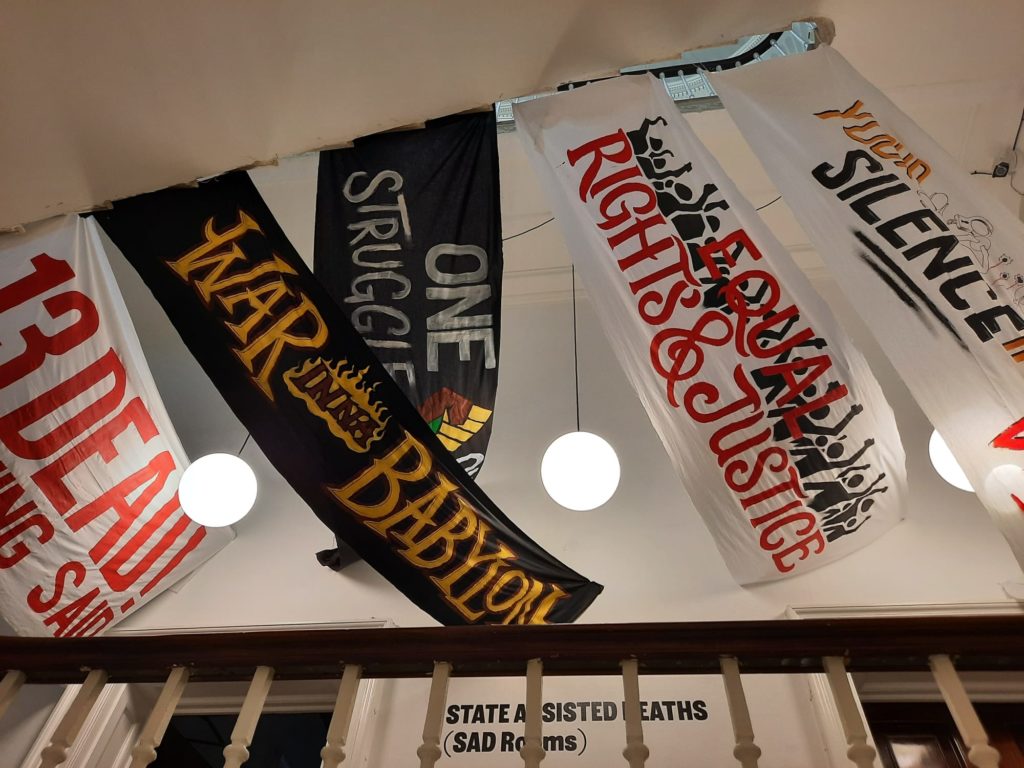
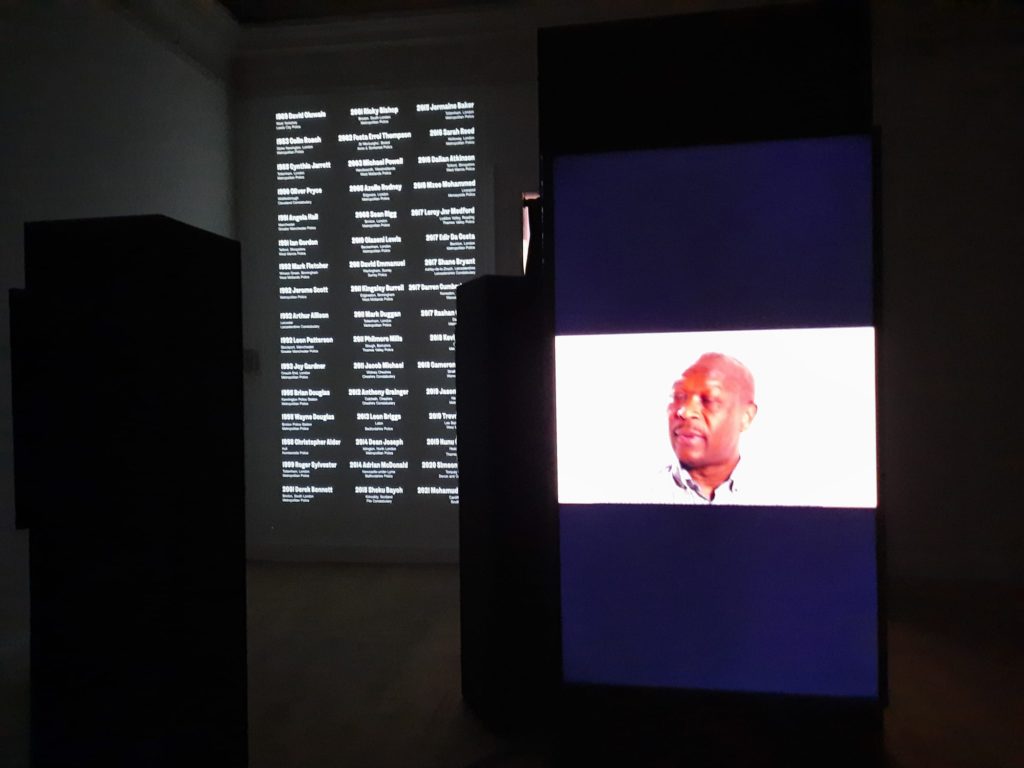

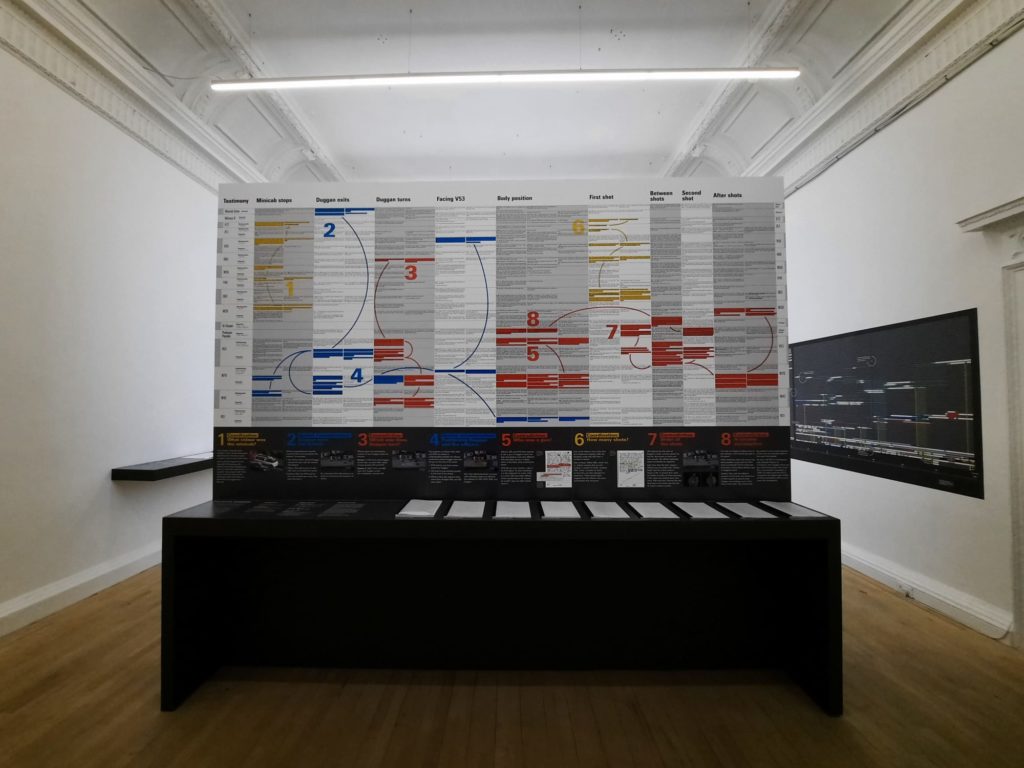
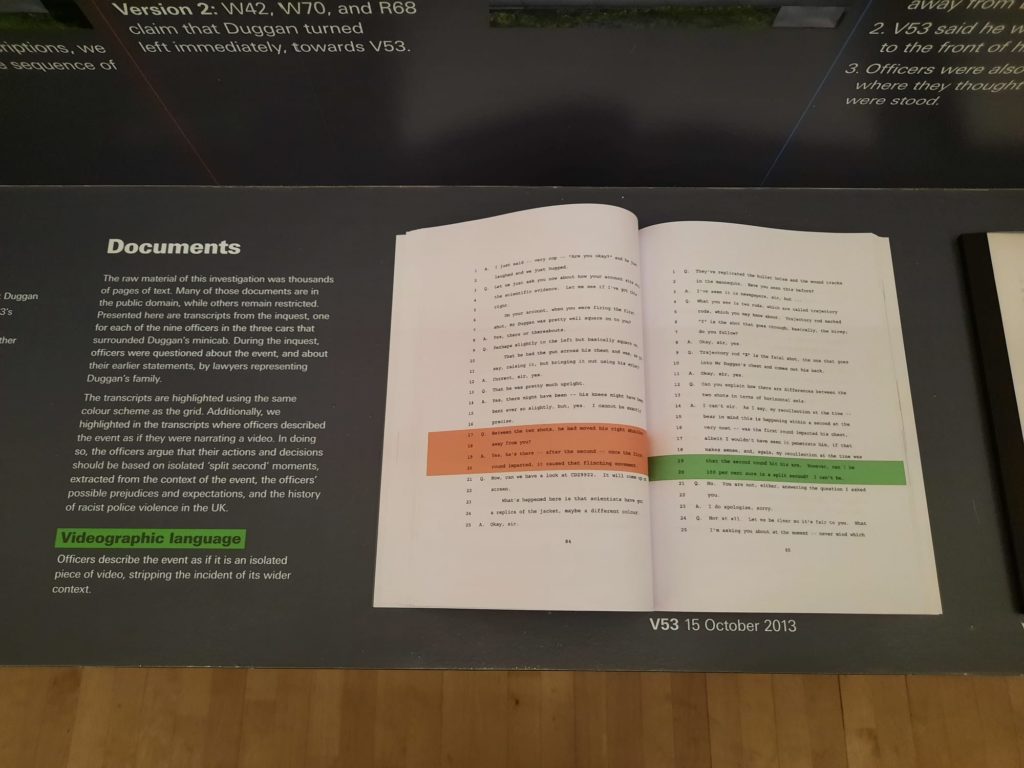
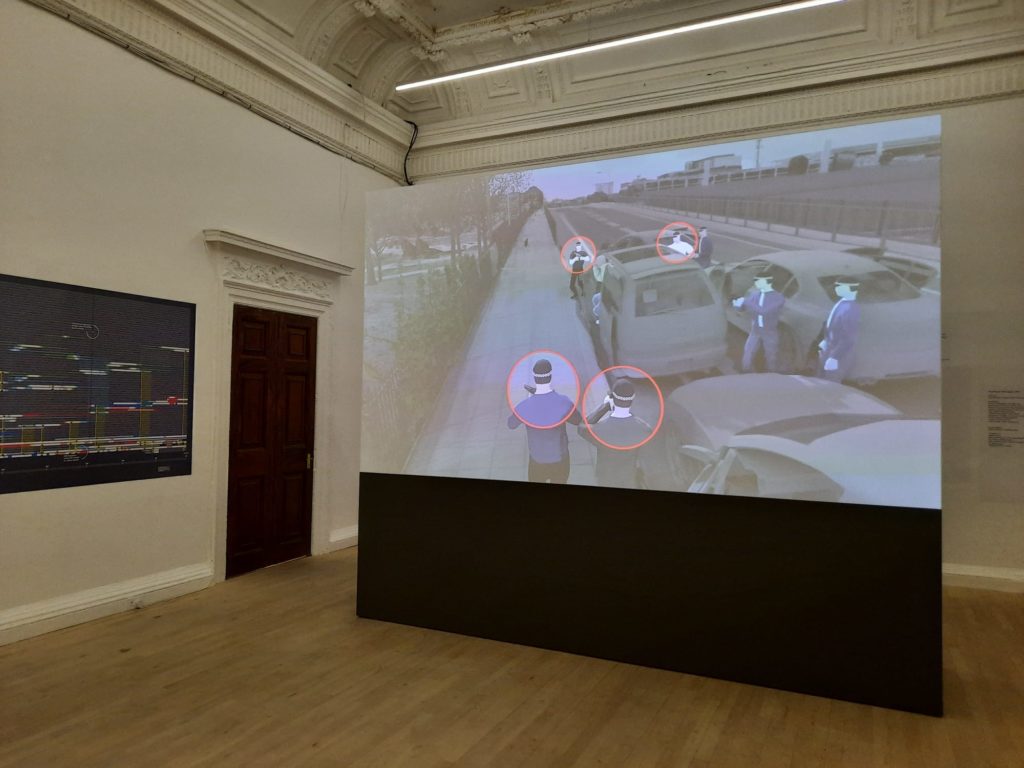
Final Thoughts
This is not an easy exhibition, but it is a crucial one. It may be confronting to think critically about the structures of power in your own society. And to delve into narratives which you may have taken at face value without probing further. The wealth of information in War Inna Babylon makes it a good place to start this journey; to learn the stories of community activists as well as some of those names we may recognise from the news.
This is one time when my social media algorithms were perfectly tuned and alerted me to an exhibition I may not otherwise have come across. Now I am doing my part by adding my own voice in support of seeing War Inna Babylon at the ICA before it finishes later this month. Go see it!
On its own merits: 4.5/5
Implementing Covid measures: 4/5
War Inna Babylon: The Community’s Fight For Truths And Rights on until 26 September 2021
Keep up with what else is on in London right now. Sign up below:
If you see this after your page is loaded completely, leafletJS files are missing.

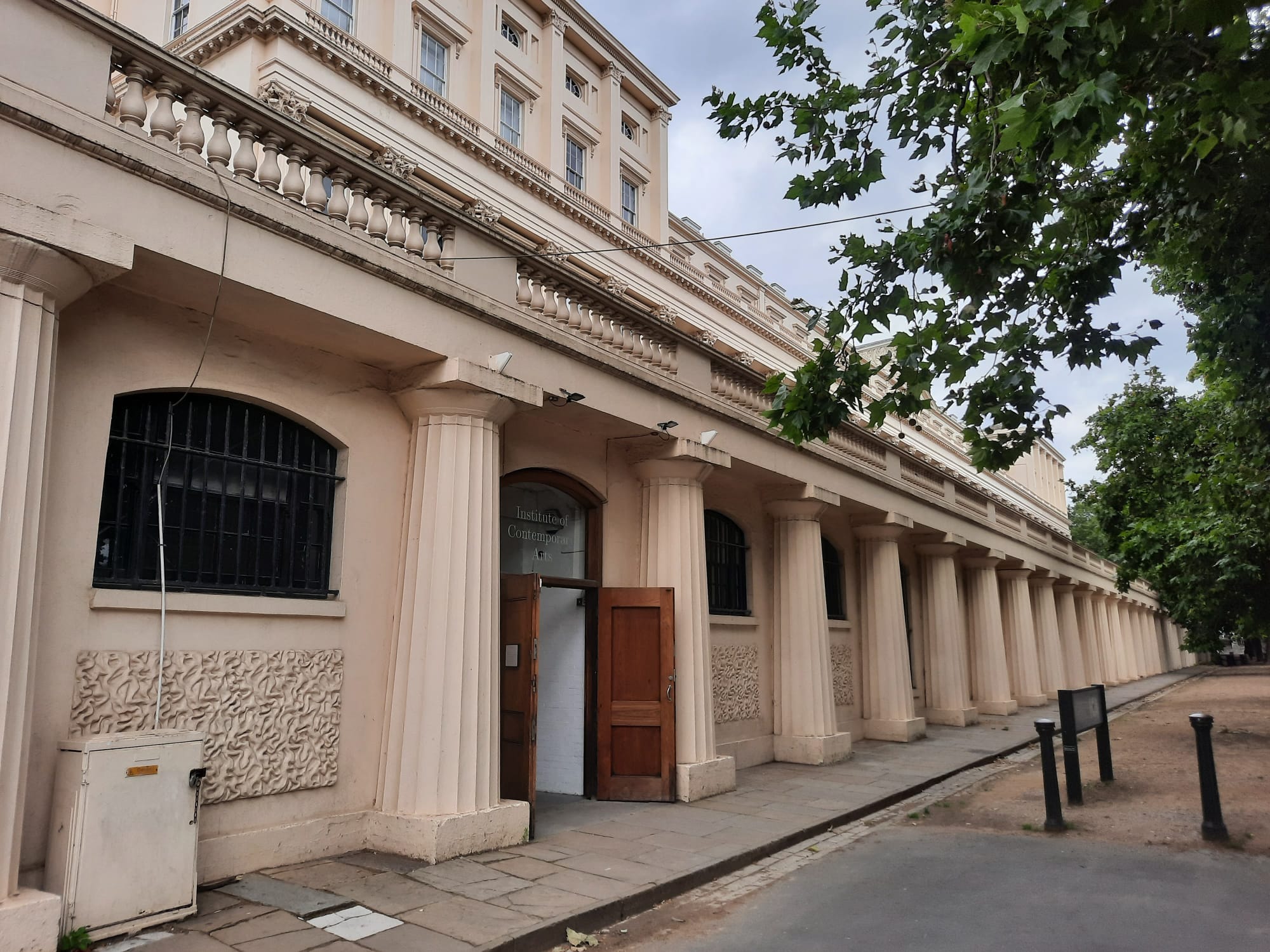
3 thoughts on “The Covid Diaries 95 – ICA: War Inna Babylon”